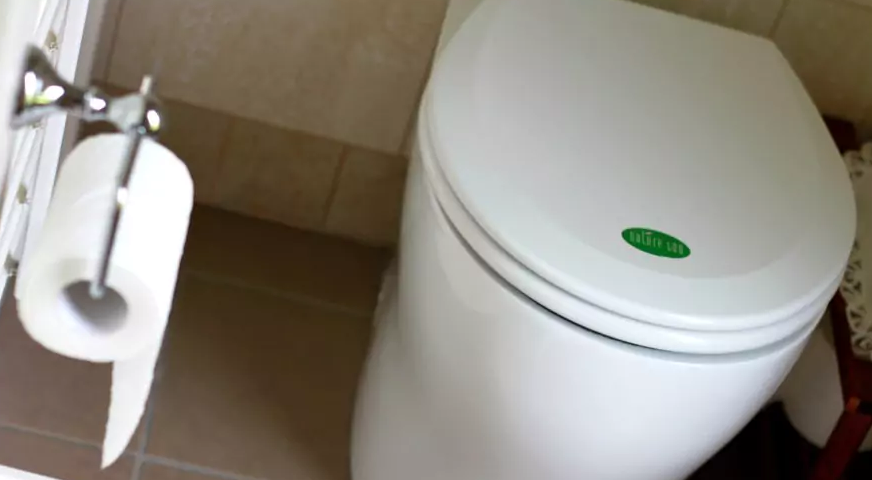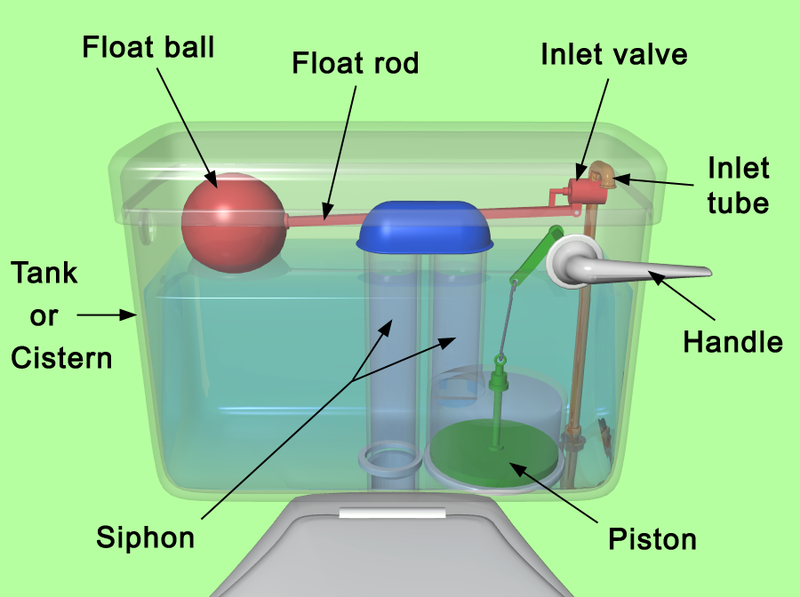It’s been said that an average human spends about 92 days sitting on a toilet over a lifetime. The first flushable toilet was invented in 1596 by John Harington and scientists have come to the conclusion that toilets have added 20 years to the average human lifespan in the past 200 years.
Today there are several types of toilets available on the market. There are different types of flushing systems, different shapes of bowls and diferent designs which often make buying a new toilet an overwhelming task.
Types of flushing systems
1.Gravity-feed toilet
Gravity-feed is the most common type of flushing toilet in the world.As the name suggests,ituses gravity to flush down the waste and there’s no highly advanced technology behind it.
When the tank gets filled with water and the flush valve is pressed, the water is dropped down into the bowl, and the force of gravity pushes the waste through the trap way.
The main advantages of gravity-feed toilets is the simplicity. They require minimal maintenance, the flushing action is quiet, and it’s the most affordable type of flushing toilet on the market.
2.Pressure-assisted toilet
Unlike gravity-feed toilets, pressure-assisted toilets don’t just rely on the force of gravity. Instead, they use pressurized air to force water from the tank to the bowl which results in a more powerful flushing action.
The main advantage of gravity-feed toilets is superior flushing efficiency, but the high tech technology comes with a few downsides.The flush action of pressure-assisted toilets is usually much louder, the flushing system is more expensive, and requires more maintenance. If something goes wrong with flushing system of a pressure-assisted toilet, you can expect to have more expenses than just replacing a few cheap valves.
Although they have been on the market for decades, pressure-assisted toilets are nowhere near as popular as standard gravity-feed toilets.
3.Dual-flush toilet
Although this is a very new type of toilet on the market, it’s getting more and more popular throughout the world. The main advantage of the dual flush is superior water saving efficiency and many people believe that dual-flush toilets will become standard in the next few decades.
A toilet with dual flush system has two separate flushing systems that either work individually, or together at once. One flushing system is usually gravity-feed while the other is pressure-feed.
The idea is that you don’t always need the maximum flushing power, so you can use gravity-feed flush for liquid waste and full flush for times when you need more flushing power.
The disadvantage of dual-flush toilets is that they are more expensive than toilet with single-flush system. The good news, however, is that they are becoming cheaper and it’s just a matter of time when they will cost nearly the same as today’s standard gravity-feed toilets.
4.Waterless toilet

As the name suggests, waterless toilets don’t use water to flush down the waste. Instead, waste is collected in a respectable underneath the toilet seat.
Waterless toilets are very uncommon in permanent homes, but they are the only option for homes where there’s no water plumbing.
Toilet Styles
When it comes to the style of a toilet, there’s a single factor that determines it; how many pieces is the toilet made from.
One piece toilets are made of a single piece of material which means that the tank and the bowl are integrated into a seamless design.
Two-piece toilets come in two pieces.The bowl and the tank are assembled together with fittings.
The advantage of one-piece toilet is that it’s easy to install because everything is already integrated into a single piece. Because there are no hard-to-reach areas between the tank and the bowl, one-piece toilets are also easier to clean and require less maintenance.
Two-piece toilets are usually cheaper and easier to repair. Most individual pieces can be replaced if something starts malfunctioning.
Design options
1.Color
Most toilets today are white. However, toilets are also available in just about any color you can think of.There are no particular advantages of having a non-white toilet when it comes to functionality.
The only advantage is the design which is only a matter of personal preference. If you think a purple toilet would look good in your bathroom, there’s no reason why you shouldn’t have one.
It’s also worth mentioning that darker toilets usually require more cleaning because dust is easier to spot on darker surface.
2.Dimensions
When buying a new toilet, there are two dimensions that are important; the length (and shape) of the bowl and the height from the floor to the top of the bowl.
3.Bowl shape and length
There are two main styles of toilet bowls.
Elongated bowl is oval in shape. It’s longer than round bowl and measures around 18 inches in length. The vast majority of adults find sitting on an elongated bowl much more comfortable than sitting on a toilet with round bowl.
Round-front bowl is round in shape. It takes up less space and is more appropriate for smaller bathrooms. The sitting experience on a toilet with round bowl is generally less comfortable for adults.
Height
Another factor that has a huge impact on the comfort is the height of the bowl from the floor to the top.
People with limited mobility and similar disabilities will often opt for a higher toilet that requires less bending while those with children will opt for a shorter toilet.
In general, there are two types of toilets when it comes to height; standard height and comfort height.Standard toilets measure anywhere from about 15 to 17 inches in height while chair height (also called comfort height) toilets measure from 17 to about 20 inches.
Taller toilets that measure 17 inches and above are compliant with the Americans with Disabilities Act.



















